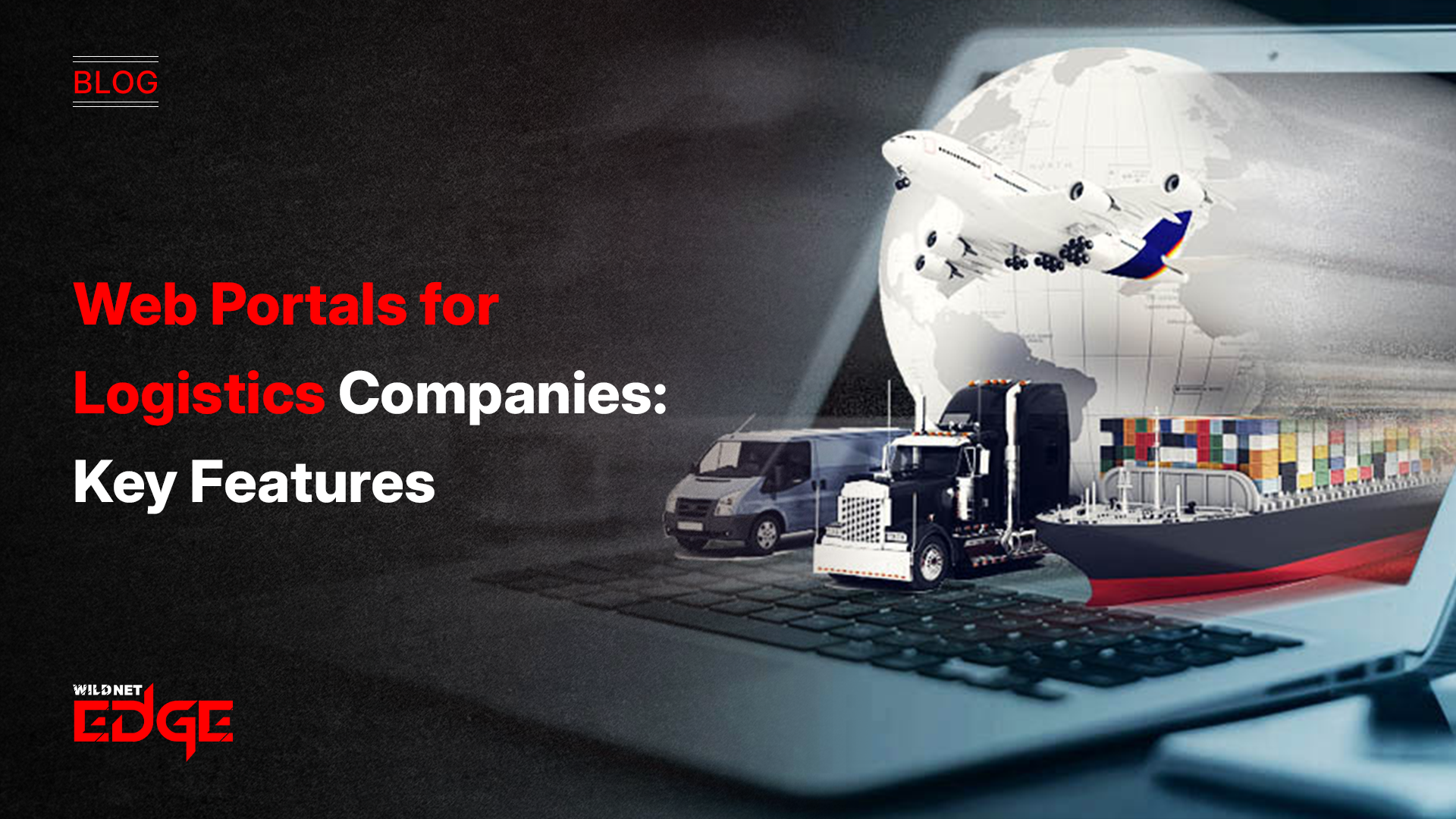Struggling to keep up with complex logistics operations? You’re not alone. Managing fleets, orders, and real-time tracking can quickly become overwhelming without the right tools. That’s why logistics web portals are game changers—they bring everything under one roof, making your workflow smoother and more efficient. In this post, we’ll break down the must-have features every logistics company needs in a web portal to boost productivity and stay ahead of the competition.
Fleet Tracking Systems: Enhancing Visibility and Control
Integrated fleet tracking systems are at the heart of any effective logistics web portal. In 2025, the demand for real-time actionable insights into fleet operations continues to rise, with companies seeking comprehensive solutions that not only track vehicle locations but also monitor vehicle health and optimize routes efficiently.
Benefits of Real-Time GPS Tracking
Real-time GPS tracking transforms fleet management by providing instant updates on vehicle positions. This visibility enables dispatchers to make instant decisions, reroute vehicles in case of traffic or emergencies, and reduce idle times — directly increasing delivery accuracy and operational efficiency.
With GPS tracking, managers can pinpoint the exact location of every vehicle, forecast arrival times with greater precision, and respond proactively to delays, ultimately boosting customer satisfaction through timely updates and transparency.
Impact on Delivery Accuracy and Customer Satisfaction
Delivery accuracy hinges on precise coordination. Integrated tracking helps minimize lost or delayed shipments by automating status updates that keep both clients and internal teams informed. Enhanced visibility reduces human errors and facilitates better resource allocation, making order delivery more predictable.
By offering customers real-time shipment tracking through web portals, companies build trust and improve brand reputation, which are critical competitive advantages as end-consumers demand seamless delivery experiences.
Tools That Support Automated Alerts and Reporting
Advanced fleet tracking solutions within logistics web portals often include automated alerts for maintenance, route deviations, and driver behavior anomalies. These alerts allow companies to maintain vehicle health preemptively, avoid costly breakdowns, and improve safety.
Additionally, customizable reporting tools distill large amounts of tracking data into actionable insights — from fuel consumption analysis to driver performance metrics — allowing continuous optimization without manual data crunching.
Actionable Tip: Leverage a portal that integrates AI-driven analytics with your fleet tracking system for predictive maintenance scheduling, minimizing downtime and maximizing fleet uptime.
Order Management: Streamlining Your Logistics Workflow
Order management is the backbone of logistics efficiency. A centralized order management system within the web portal ties together every step of the order lifecycle, dramatically reducing manual input and eliminating bottlenecks.
Centralized Order Tracking and Status Updates
Modern logistics web portals consolidate order information into a single, comprehensive dashboard. This allows logistics teams to track each order’s status in real time, from placement and processing to delivery and invoicing. By providing immediate visibility across teams, the portal cuts down on miscommunication and delays.
This centralization also empowers customer service teams to access accurate order statuses instantly, improving their ability to respond promptly to client inquiries without digging through disconnected systems.
Integration with Inventory and Billing Systems
Seamless integration with inventory and billing systems is vital for minimizing errors and ensuring reliable data flow across departments. When order management is linked with inventory tracking, stock levels update automatically with every transaction, preventing stockouts or overstock situations.
Billing integration, on the other hand, streamlines invoicing processes and ensures that orders are immediately reflected in financial systems, speeding up revenue cycles and reducing administrative overhead.
Automated Workflows to Speed Up Order Fulfillment
Automation in order management eliminates repetitive tasks such as manual data entry, status updates, and follow-ups. Business rules can be embedded within the portal to trigger next steps automatically — for example, routing urgent orders to priority shipping or sending customer notifications once the order is dispatched.
Such workflows reduce human error and accelerate fulfillment times, enabling logistics companies to handle higher order volumes without sacrificing accuracy or service levels.
Actionable Tip: Choose a logistics web portal with customizable automation that fits your business rules, allowing you to scale operations without the need to continually hire more staff.
User Interface and Accessibility
An effective logistics web portal must be as accessible as it is powerful. The user interface (UI) and user experience (UX) design directly impact adoption rates among staff and the overall efficiency of your logistics processes.
Importance of an Intuitive Dashboard
The dashboard is the command center for logistics teams. An intuitive dashboard presents critical KPIs, alerts, and actionable data in a clean, easy-to-navigate format. By customizing dashboards based on user roles, companies ensure that managers, dispatchers, and drivers each see the most relevant information.
Visual elements like charts, heat maps, and timelines help quickly identify trends or issues, supporting faster decision-making and reducing cognitive overload for busy logistics professionals.
Mobile App Support for Drivers and Managers
Mobile accessibility is non-negotiable in 2025. Drivers on the road need real-time updates, route changes, and the ability to report issues on the fly. Simultaneously, managers require on-the-go access to fleet and order data without being tied to a desktop.
Logistics web portals with dedicated mobile apps or responsive web designs allow staff to stay connected anytime, anywhere, fostering agility and responsiveness essential in dynamic environments.
Role-Based Access Control for Security
Security remains a top priority given the sensitive nature of logistics data. Role-based access control (RBAC) ensures users only have permissions necessary for their function — protecting confidential client data and operational details from unauthorized access.
By implementing RBAC, companies reduce internal risks, control information flow, and comply with industry regulations like GDPR or CCPA more effectively.
Actionable Tip: Evaluate your portal’s UI with frontline users during onboarding to ensure it caters to their workflows and boosts productivity rather than causing frustration.
Industry Trends and Advanced Features in Logistics Web Portals
The logistics sector is rapidly evolving, and web portals must keep pace by integrating advanced technologies that address emergent challenges and opportunities.
AI-Driven Predictive Analytics for Demand Forecasting
Artificial intelligence is revolutionizing logistics with predictive analytics that help forecast demand, optimize inventories, and dynamically allocate resources. AI algorithms analyze historical data, market trends, and external factors (weather, economic shifts) to provide accurate demand predictions and proactive supply chain adjustments.
These insights enhance decision-making, minimize waste, and improve customer satisfaction through better order readiness.
IoT Integration for Better Asset Management
Internet of Things (IoT) devices embedded in vehicles, warehouses, and equipment create a connected ecosystem that provides real-time status updates on assets. From temperature sensors in perishable goods transport to tire pressure monitors, IoT integration within web portals delivers granular visibility.
This connectivity helps reduce losses, improve safety, and support compliance with regulations requiring precise environmental monitoring.
Cloud-Based Scalability and Data Security Essentials
Cloud computing remains foundational for logistics web portals, offering unparalleled scalability, flexibility, and access to the latest security protocols. Cloud-based portals enable companies to rapidly adjust capacity during seasonal peaks without expensive infrastructure investments.
Moreover, cloud-hosted solutions benefit from continuous security updates, data backups, and disaster recovery options that traditional on-premises systems often lack.
Actionable Tip: When selecting a logistics web portal, prioritize providers offering AI capabilities and IoT compatibility, ensuring your platform remains future-proof amid industry innovation.
Conclusion
Efficient logistics operations hinge on having a robust web portal packed with features like fleet tracking systems and streamlined order management. These core functionalities, combined with a user-friendly interface and cutting-edge technologies such as AI-driven analytics and IoT integration, offer logistics companies the tools needed to increase visibility, reduce errors, and optimize workflows.
Choosing the right platform is critical, and WildnetEdge stands out as a trusted partner delivering cutting-edge logistics web portal solutions tailored to your needs. Their scalable, secure platforms integrate all essential features with a commitment to innovation and customer success.
Ready to optimize your logistics with confidence? Discover how WildnetEdge can elevate your operations today.
FAQs
Q1: What are key features of logistics web portals?
Key features include real-time fleet tracking, centralized order management, user-friendly dashboards, and integration capabilities with other logistics tools.
Q2: How do fleet tracking systems improve logistics efficiency?
Fleet tracking systems provide real-time vehicle location, optimize routes, reduce delivery times, and improve overall fleet utilization.
Q3: Can logistics web portals integrate order management with inventory systems?
Yes, most modern logistics web portals offer seamless integration to synchronize orders with inventory, enabling faster and accurate fulfillment.
Q4: What role does mobile accessibility play in logistics portals?
Mobile access enables drivers and managers to update and monitor operations on the go, ensuring timely communication and decision-making.
Q5: Why choose WildnetEdge for logistics web portal solutions?
WildnetEdge offers customized, scalable web portals with advanced tracking and order management features backed by industry expertise and support.

Nitin Agarwal is a veteran in custom software development. He is fascinated by how software can turn ideas into real-world solutions. With extensive experience designing scalable and efficient systems, he focuses on creating software that delivers tangible results. Nitin enjoys exploring emerging technologies, taking on challenging projects, and mentoring teams to bring ideas to life. He believes that good software is not just about code; it’s about understanding problems and creating value for users. For him, great software combines thoughtful design, clever engineering, and a clear understanding of the problems it’s meant to solve.
 sales@wildnetedge.com
sales@wildnetedge.com +1 (212) 901 8616
+1 (212) 901 8616 +1 (437) 225-7733
+1 (437) 225-7733































